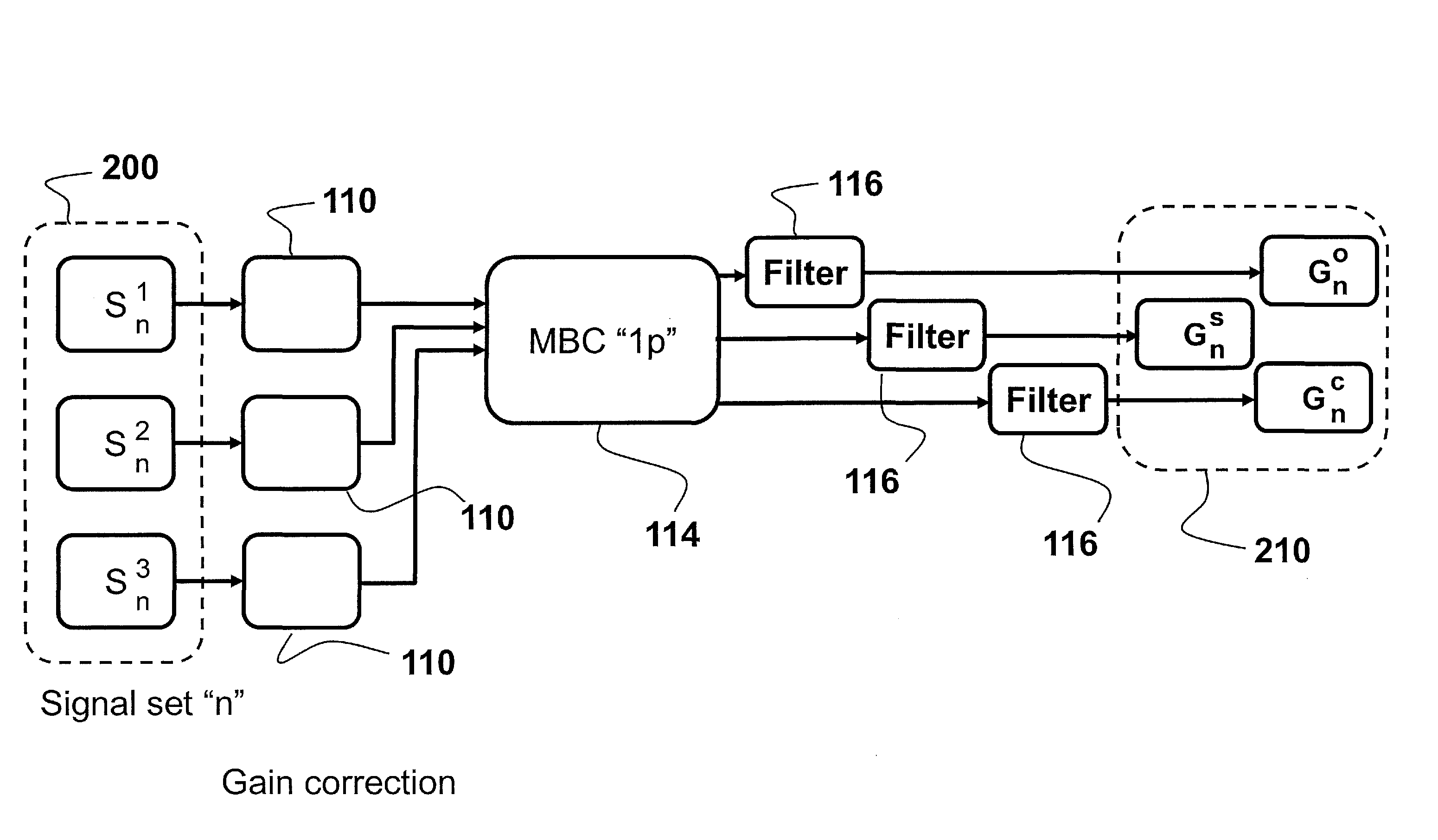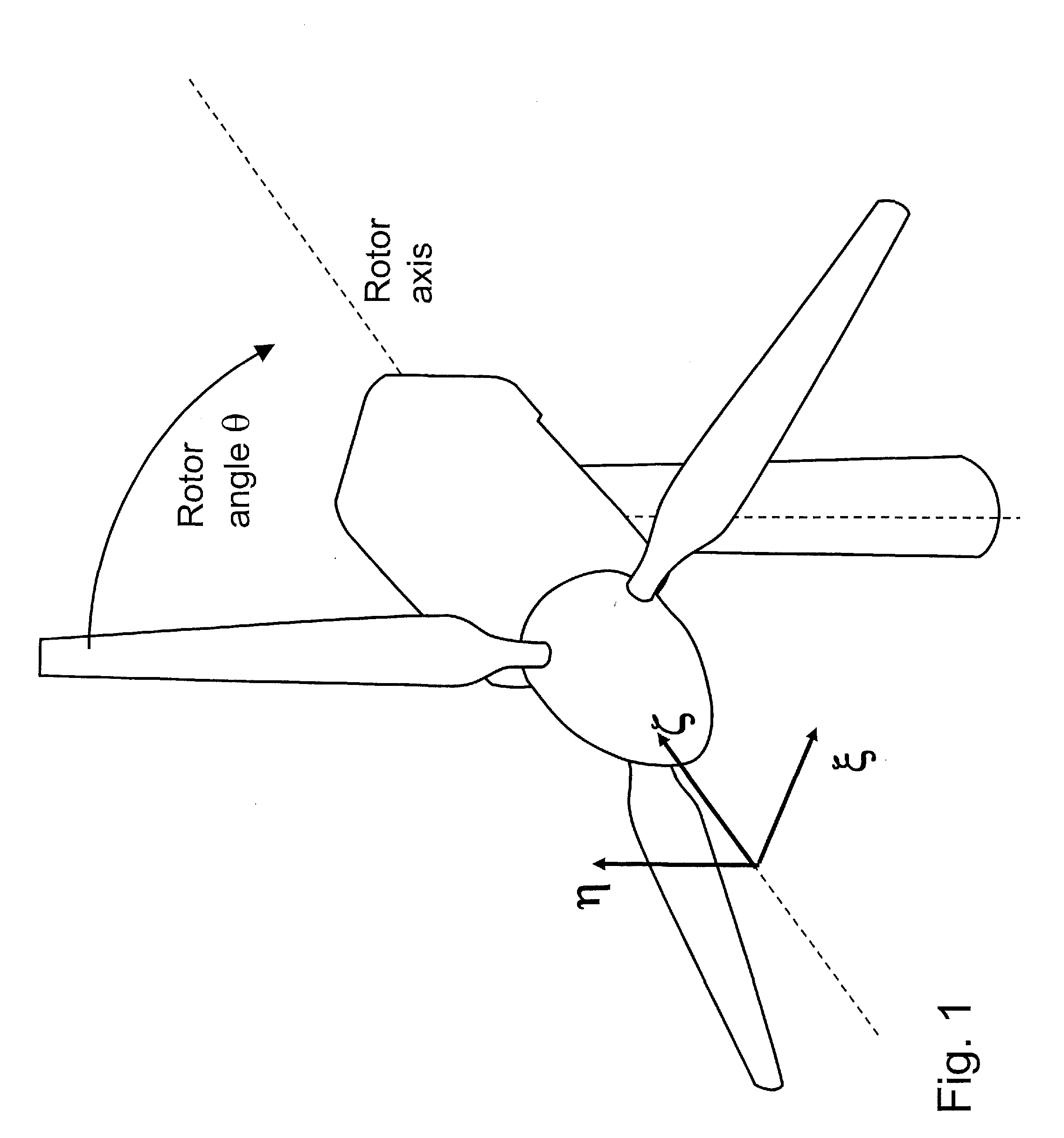Wind sensor system using blade signals
a sensor system and wind sensor technology, applied in the direction of engine control parameters, comparison table algorithms, engine fuctions, etc., can solve the problems of inability to individually estimate wind speed and wind direction without additional measurements or assumptions, and the claimed method does not provide the desired wind speed-velocity field quantities
- Summary
- Abstract
- Description
- Claims
- Application Information
AI Technical Summary
Problems solved by technology
Method used
Image
Examples
Embodiment Construction
[0016]The invention can be applied to a rotor with two or more blades, including rotors having three blades attached to the rotor through a pitch bearing.
[0017]Wind Velocity Field Characteristics
[0018]The wind velocity field characteristics used in this invention are wind velocity values spatially averaged over the rotor swept area. Since the average is in space only, the time variation of the data is not affected.
[0019]In the following description, use is made of a coordinate system, with coordinates ξ, η, ζ, that is non-rotating, hence fixed with the nacelle. See FIG. 1. The ζ coordinate is pointing along the axis of rotation of the rotor, denoted by the unit vector n. (Bold letters denotes vectors, as is customary in the art). The coordinate η points vertically up, and the axis ξ completes the orthogonal coordinate system by pointing in the horizontal direction.
[0020]A first wind velocity field characteristic is the mean wind velocity:
Vm(t)=1A∫∫V(t)A(1)
where A is the rotor swept ...
PUM
 Login to View More
Login to View More Abstract
Description
Claims
Application Information
 Login to View More
Login to View More - R&D
- Intellectual Property
- Life Sciences
- Materials
- Tech Scout
- Unparalleled Data Quality
- Higher Quality Content
- 60% Fewer Hallucinations
Browse by: Latest US Patents, China's latest patents, Technical Efficacy Thesaurus, Application Domain, Technology Topic, Popular Technical Reports.
© 2025 PatSnap. All rights reserved.Legal|Privacy policy|Modern Slavery Act Transparency Statement|Sitemap|About US| Contact US: help@patsnap.com



